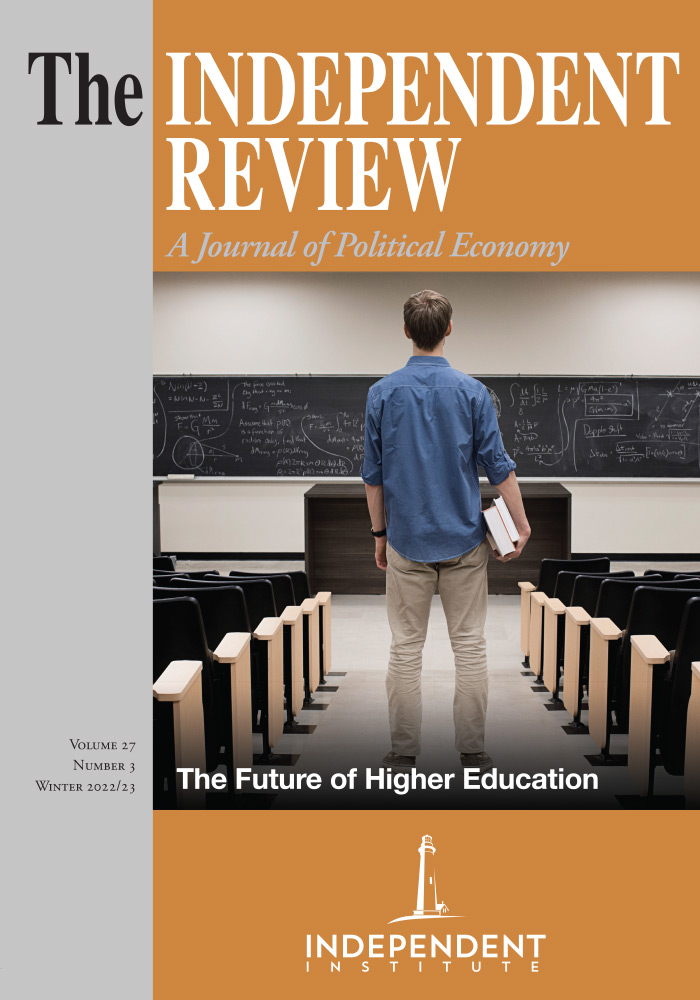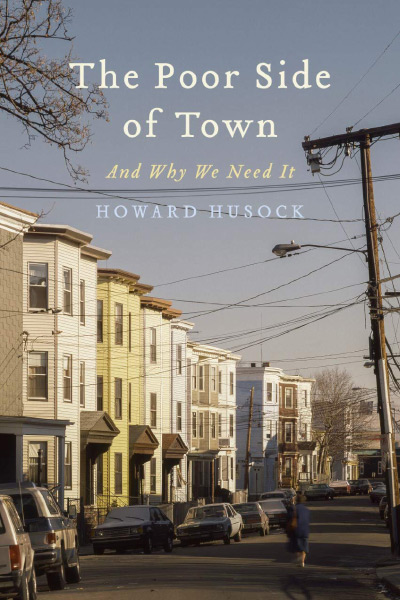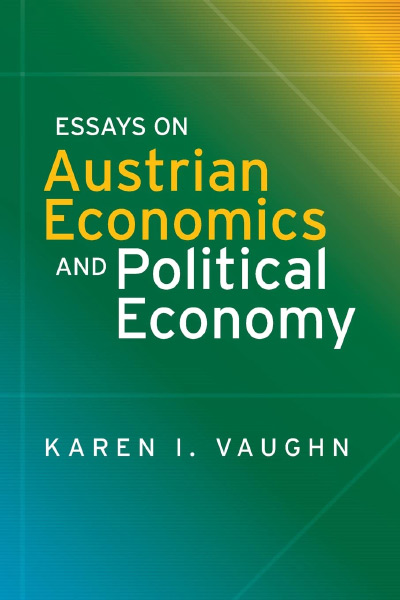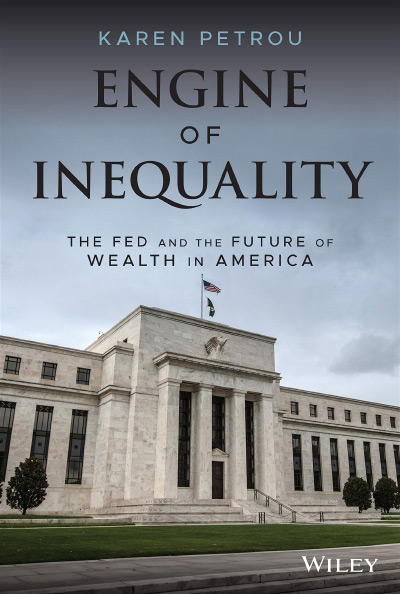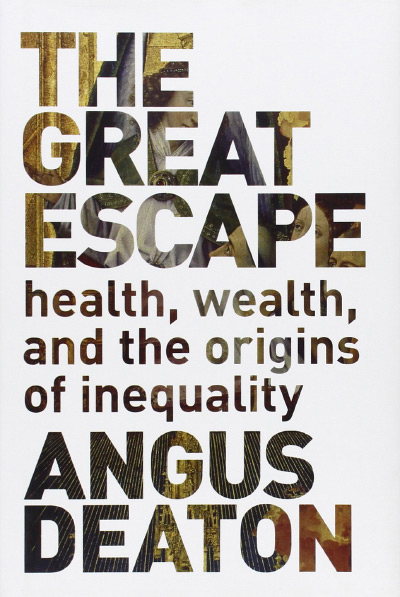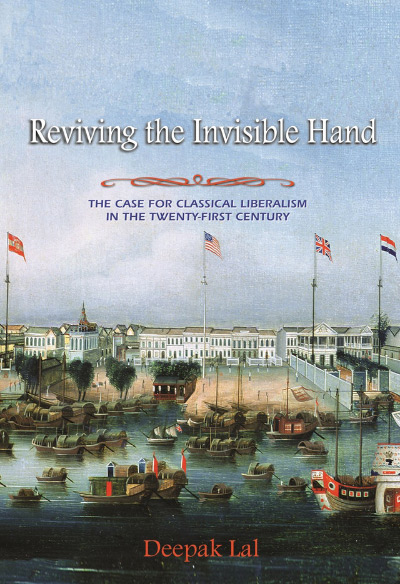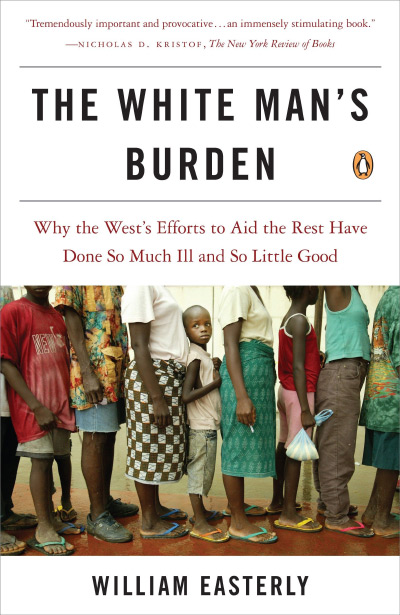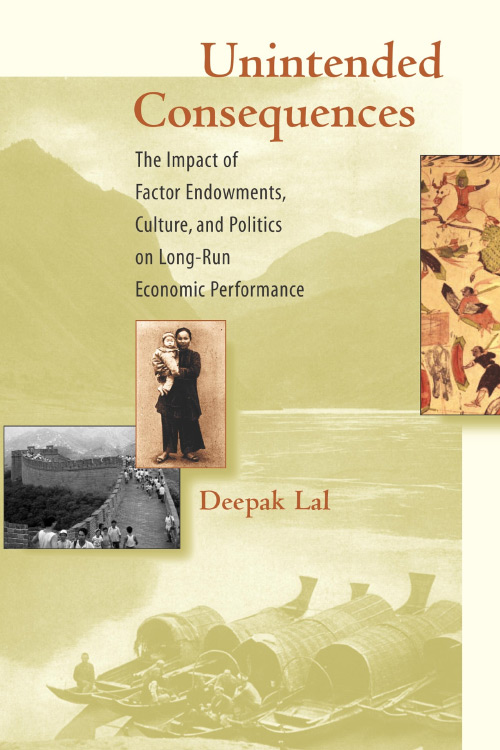One of the more surprising trends triggered by the pandemic has been skyrocketing housing prices and dramatically reduced housing affordability. While housing prices had been trending upward since 2012 according to the widely cited S&P/Case-Shiller U.S. National Home Price Index, home prices accelerated once COVID-19 lockdowns were implemented: Housing prices increased 43 percent on average over just two years compared to just 8.8 percent in the two years leading up to the pandemic.
Soaring prices outstripped incomes, inducing panic in some markets. A national moratorium on evictions from rental properties during the pandemic helped fuel local efforts to control housing prices. Rent control is now back on the ballot in many cities, and inclusionary zoning—a policy that requires builders to add “affordable units” as a condition of regulatory approval has become more common.
This context makes Howard Husock’s book The Poor Side of Town: And Why We Need It particularly timely. Written with the breeze and storytelling flair of a journalist, more academically minded readers might find the argument less compelling. But Husock’s main point is relevant and important: once upon a time the private sector produced massive amounts of affordable housing. Understanding why this is no longer the case, and why policymakers should focus on revitalizing private sector approaches, is important as a practical matter as well as a way to stabilize declining neighborhoods, foster social cohesion, and, paradoxically for some, reduce racial segregation.
The first chapter sets the stage. Historically, most cities grappled with rapid immigration and economic growth by building large amounts of affordable housing. The concentration of this housing and poverty became the urban slums of the nineteenth and early twentieth centuries. Critics, most notably and influentially the journalist Jacob Riis, decried the “deplorable” living conditions, citing the lack of air and sunlight, small spaces, and rudimentary sanitary facilities. Riis’s visceral descriptions of slum life in his influential book How the Other Half Lives ignited a social reform movement. This set the stage for a wholesale revision of housing policy by using government as the principal instrument for building what they believed would be better for the poor. Husock explains why this movement ended up being a disaster for the urban poor.
Chapter II explores why focusing on the physical characteristics of these places misses critical elements that made these slums organic, dynamic “zones of emergence.” Many of the low-rent homes had filtered down from middle-class or wealthy families as they subdivided existing homes into multifamily units. Some even built “three decker” homes to accommodate low-income and lower-income tenants. All of this housing was built by the private sector. Considered short-term housing, low rents allowed residents to scrimp and save as they worked to gain a foothold in the labor market and earn higher incomes over time. Largely unregulated in the nineteenth and early twentieth century, these units provided sparse but habitable housing. Most were never intended to be “forever” homes. Rather, they were way stations on the ladder of upward mobility.
These slums also provided economic opportunities for indigenous residents. While critics and reformers decried the “absentee landlord,” large numbers of these affordable units also had an “owner presence.” This meant that the owner of the building often occupied one of the rental units. In some neighborhoods, one third or more of the rental units had the owner living on the property or in close proximity to the rental. This “owner presence” helped stabilize neighborhoods. Not only did the owners police their units, but they also built personal wealth through the value of the properties they owned and managed.
Chapter III, “‘Modern Housing’ and the Crusade Against the Poor Side,” details the ways urban elites such as Lawrence Veiller—head of the National Better Housing Association—and social reformers such as Edith Elmer Wood and Catherine Bauer seized on the journalism of Riis and others to launch a crusade to rid cities of these slums and privately provided low-income housing. They would advocate for limiting the types of housing that could be built, publicly funded low-income housing, and the aggressive use of zoning and other urban planning tools to purge the cities of the bottom up, decentralized, privately provided affordable housing.
By and large, the reformers and planners were successful. By 1950, poor neighborhoods that included housing with owner occupants fell from 52 percent to 10 percent in Detroit, from 39 percent to 8 percent in St. Louis, and from 33 percent to 16 percent in Chicago.
The result, Husock argues, was catastrophic. Most public housing high-rises descended into ungovernable, poorly maintained urban monstrosities. Public housing also contributed to racial segregation as larger shares of blacks were concentrated in public housing units.
Chapter IV examines how the private sector once again stepped up to meet the demand for housing among the working class, much to the consternation of housing policy elites. As millions of soldiers returned home from World War II, higher incomes and private employment dramatically increased the demand for detached, single-family housing. William Levitt (and others) pioneered mass production techniques in housing to build hundreds of thousands of affordable single-family homes to accommodate the sizable increase in housing demand after the end of World War II.
“Levitt,” writes Husock, “would disprove Wood and Bauer: the private sector could provide housing for the working man” (p. 55). While Levitt’s business practices came under suspicion, particularly those enforcing racial segregation, the sheer scale of his success in building affordable housing left an enduring legacy. (See also Rosalyn Baxandall and Elizabeth Ewen, 2000, Picture Windows: How the Suburbs Happened. New York: Basic Books.)
Despite these successes, the social reformers continued to dominate the commanding heights of housing policy. Robert Weaver, the Department of Housing and Urban Development’s first secretary, continued to pound the podium for the need to replace “poor side neighborhoods” with public housing as the center of neighborhood redevelopment programs. “It is our goal to reconstruct the physical and social fabric of the American urban environment,” Weaver said (p. 74).
The effects? HUD’s approach “inevitably had the effect of suppressing the cycle of growth, decline, and spontaneous renewal,” writes Husock. These policies ignored the evidence that residents of the “poor side” could engage in self-improvement and that these areas could serve “as the foundation for upward mobility” (p. 76).
Chapter VI, “The Minister and the Builder,” however, provides a glimmer of hope. Exploring the Nehemiah homes project in New York City, Husock examines how Rev. Johnny Ray Youngblood and retired housing developer I. D. Robbins took a page from the organic process of development and redevelopment to create cheaper, locally appropriate housing by “reinventing dispersed, private management” by relying on single-family homeowners and small landlords (p. 88). Nehemiah Homes built homes for 2,800 families in Brooklyn and the South Bronx. (Notably, Nehemiah projects exist in scores of cities, providing rental assistance and affordable mortgages to support low-income homeownership.)
Ironically, the organic nature of slums as zones of emergence is increasingly recognized internationally. In a later chapter, “Slums of Hope,” Husock discusses how informal settlements in the U.S. and in low-income countries continue to provide economic opportunities and social mobility for poor residents and families. In the U.S. 500,000 people live in 2,294 small towns and rural settlements called “colonias” in Texas. According to the Dallas Fed, 40% of residents are poor. Similarly, urban slums in places such as South Africa and Mumbai are bustling centers of economic activity and growth. (See also Robert Neuwirth, 2004, Shadow Cities: A Billion Squatters, a New Urban World, London: Routledge; Samuel R. Staley, 2009, “Slumdog Entrepreneurship: Entrepreneurship Holds Key for India’s Slums,” Newgeography.com, April 6.)
Research by the Dallas Federal Reserve Bank and the United Nations is putting more emphasis “on making poor communities better communities. They reflect an implicit view that we must avoid extrapolating from a snapshot of current conditions and concluding, as did the twentieth-century housing reformers, that such conditions were both inevitable and permanent. Instead, poor neighborhoods can be understood as places where ambition takes form, places that serve as repositories of financial assets that help make upward mobility possible” (p. 157).
Nevertheless, chapters VII, VIII, and IX discuss in detail how policymakers, elected officials and others continue to favor public sector solutions despite their legacy of failure. At the core of this failure is an unwillingness to recognize that neighborhoods and communities are organic and dynamic. Historically, when allowed, they go through cycles of growth, decline, and resurgence. By politicizing the redevelopment process, private interests—whether homeowners or program advocates—become entrenched. The political process is used to secure benefits for the newest planning or revitalization fad.
Modern housing policy presumes that neighborhoods are static and that opportunities are limited by zip code (or physical geography). This is the foundation for programs that emphasize deconcentrating poverty or using housing vouchers to encourage families to move to different school districts. Low-income tax credit programs presume that the key to upward mobility is for poor people to move to suburban locations. This idea is rooted as far as the founding of HUD, where Robert Weaver and his policy staff believed urban neighborhoods were so irredeemable that they had to be comprehensively rebuilt.
Husock concludes The Poor Side of Town with a set of proposals that could help restore the dynamism of the poor side of town. In Chapter XI, “Unreforming Housing,” Husock makes the case for a complete restructuring of U.S. housing programs. Adopting flat rents to lease property rather than keying rent subsidies to an income threshold (currently at 30%) would enable renters to save more money. Rather than creating subsidized housing as a life-long entitlement, short-term leases would re-establish public housing as a way station to upward mobility rather than long-term housing choices. Similarly, allowing long-term residents to buy out their units would give them incentive to accumulate wealth while also focusing on protecting their assets.
More innovatively, Husock notes that many residents could benefit from life coaching and financial counseling to improve their personal financial management skills and focus on the long-term. More cities should follow the examples of Minneapolis and Seattle by reforming zoning codes to allow multifamily housing (or subdividing single-family housing) in residential areas or raising height limits to accommodate more units to meet demand.
Ultimately, building more private housing is critical for addressing housing affordability. While most of this housing will be built for the non-poor (see, for example, Kevin Erdmann, 2021, Shut Out: How a Housing Shortage Caused the Great Recession and Crippled Our Economy, Lanham, Md.: Rowman and Littlefield), providing opportunities for housing and social mobility for the urban poor should be a significant component of the solution.
A critical step is to acknowledge the value of the Poor Side of town and give the dynamics of these communities the respect they deserve in policy. Upward social mobility is helped “if one can start in the poor side of town where one holds assets, even modest ones, and in which municipal services like public safety, public schools, and public recreation are well provided. A healthy poor side of town is the launching pad toward a zone of emergence” (p. 110, emphasis in original). But it will take hard work, and the transition will be complex.
The Poor Side of Town is an important contribution to understanding the history of urban development and helps re-center urban policy discussions as a natural organic process. Husock’s accessible writing style allows this book to be read, and understood, by a wide range of audiences.
| Other Independent Review articles by Samuel R. Staley | |
| Winter 2016/17 | Zoning Rules!: The Economics of Zoning Regulation |

